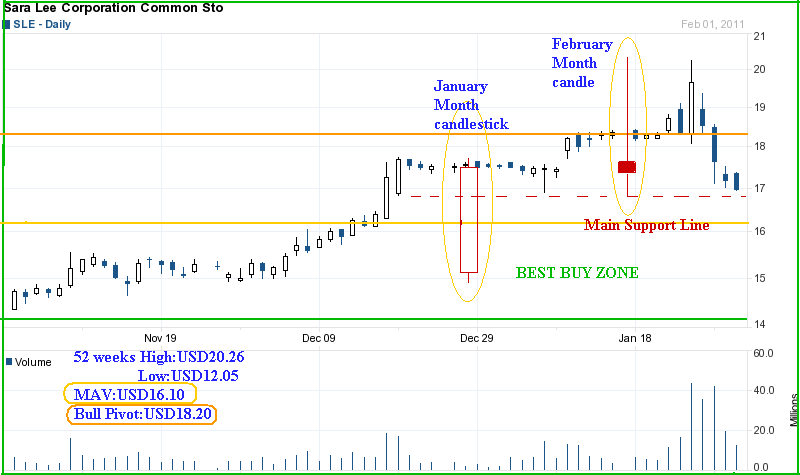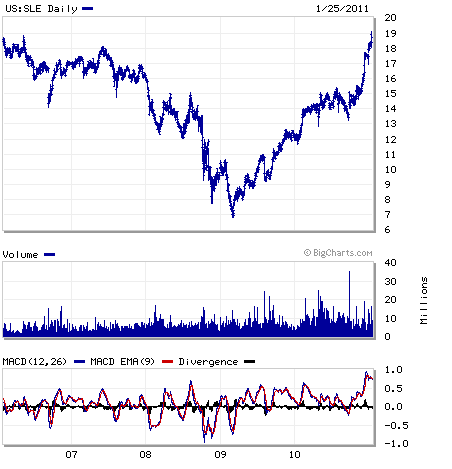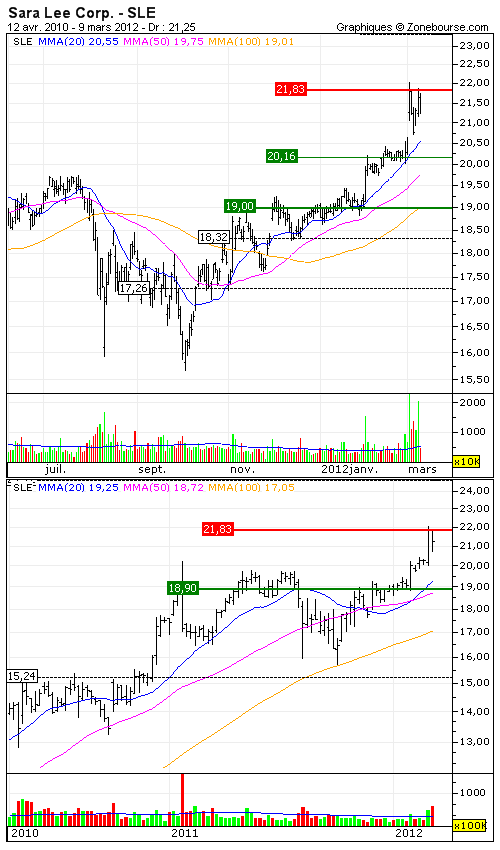Introduction
Organization management in the 21st century demands careful and continuous economic analysis that seeks to evaluate a business’s position at any particular moment in relation to its missions, strategies, and pre-established objectives. It is worth noting that failure to provide a clear critique of the method used by management leads to the assumption that a business is indeed using the best system. According to management analysts, this serves as a major recipe for partial or total business failure (Zaczkiewicz 2006, p. 2). Therefore, careful analysis provides business management with a chance to address possible loopholes in business operation strategies to increase profitability.
Of greater importance for this analysis is Sara Lee Company that operates in a competitive business environment and needs instantaneous restructuring of its products, supply and pricing strategies to convince the market and eventually make profits. The company has numerous ranges of products such as household, innerwear, intimates as well as food and beverage products whose demand and supply are affected by certain factors. It is against this backdrop that this paper provides an intrinsic analysis of Sara Lee Corporation Innerwear line in Walnut account in addition to factors affecting the demand and supply of this product. Moreover, the competitors of the company alongside the pricing strategies of the firm have been addressed in the paper.
Sara Lee Corporation
Sara Lee is a marketer and a leading global manufacturer of brand-name and high-quality products. The company has its headquarters in Chicago, operates in more than 55 countries and supplies its diverse range of products to about 200 countries. Sluyterman and Wubs (2010, p. 822) posit that the global business of this company is divided into three important sections which include household products, Intimates and innerwear, and food and beverages.
It is imperative to highlight that since its formation Sara Lee Corporation has continued to grow and widen its market share both in the United States as well as on a global scale. In the United States, Sara Lee maintains a Girls’ Panty line products at Wal-Mart Account in North Carolina (Sluyterman & Wubs 2010, p. 822). In order to effectively meet the high standards set by Wal-Mart as well as be in a formidable position to manage market competition geared towards improved profits, Sara Lee maintains an effective analysis of its global business operations.
Demand and supply of product and services
Demand and supply are key factors which impact on the ability of a business to determine its marketing potential on a regular basis. The two aforementioned factors are also key determinants when setting prices and developing the quality of products to meet customers’ needs. Marketing effectiveness as expounded by Birkinshaw, Bouquet and Ambos (2007, p. 39) is a holistic outset that dictates an organization’s ability to analyze all the prevailing conditions that facilitate the attainment of a competitive advantage over existing and emerging competitors.
It is notable that Sara Lee Wal-Mart’s account division analysis is one of the most effective bearing in mind that it provides a cross-cutting evaluation of product performance in the market. Besides, Sara Lee’s management has facilitated an effective relationship with Wal-Mart and therefore has been relied on in terms of supplying a wide range of brand names (Zaczkiewicz 2006, p. 2).
As a result, it has acted as a critical organization in promoting sales at the stores at low prices and sustainable supplies. As a result, this relationship promoted the internal sales for Wal-Mart while creating the much-needed impression in other external Sara Lee’s branches. In addition to that, the corporation had an effective supply from its widespread supply chain by maintaining distribution centers for its products (Zaczkiewicz 2006, p. 2). As a matter of fact, the supply chain system of the company has been modified from time to time in order to meet the needs of the dynamic market.

Sara Lee’s ability to meet various demand levels in the market lies in the efficacy of its analytical capacity in the overall process of marketing. The corporation has employed highly experienced supply chain analysts who are able to cite possible shortcomings of pricing and products that affect the demand and supply of its products and also come up with workable solutions to address the problem. One such individual was Kirk Nelson who used modern technology to determine sales progress for the company’s different products. After noting that one of the Basic Hipster styles was not doing well, Kirk Nelson offered professional help that saw decisions made to replace it (Zaczkiewicz 2006, p. 2). Besides, the corporation’s products were in high demand at Wall-Mart while its management had an effective structure that facilitated the needed communication between the analysts and their seniors.
Nature of elasticity
Price elasticity is a major factor that has been identified as a major determent of supply on goods and services. Using the law of demand, consumers of Sara Lee’s products have been willing to buy or unwilling to buy products largely due to pricing mechanisms at the company. For instance, the high product price has seen a significant reduction in the quantity demanded by its products. Lyson (2000, p. 199) points out that price elasticity of demand dictates that the lower the prices of commodities, the happier consumers become, while with higher the prices, the more consumers stop buying and seek alternative products that are possibly affordable and within their tastes and preferences.
This, therefore, requires reframing, a factor that Neidik (2004, p. 279) refers to as a deliberate process of exploring the complex situation using different perspectives. Leaders in Sara Lee have been effectively equipped with the knowledge and practical basement for ensuring that the prices of its products do not lower the demands of its customers by taking into consideration factors like lowering commodity prices to yield the highest results.

Major competitors
Sara Lee Corporation has over the years been effective and efficient in offering its customers the right demand and supply of its products. This has been mainly contributed by the high rate of competition it faces from other giant competitors like Darling International Inc and American Lorain Corporation among others (Lopes & Casson 2007, p. 651). Low and Davenport (2005, p. 494) point out that stiff competition from the aforementioned companies has given Sara Lee greater incentives to provide the best and quality products to consumers. Indeed, competition enhances efficiency and offering of quality products and services which is what most customers require.
Market structure
In terms of market structure, adopting an effective market structure is a critical factor since a market structure plays a pivotal role that impact on positioning, placement, promotions, advertising, pricing, and other important marketing decision. The market structure for Sara Lee apparel products is monopolistic since it dominates the US intimate apparel market (Zaczkiewicz 2006, p. 2). Besides, in the global lingerie market, Sara Lee is a leading player and has a major market share in the European market as well as at home
Major pricing strategies and cost advantages
Low prices for products as a pricing strategy is important as it enables Sara Lee Corporation to gain a type of competitive advantage called cost advantage (Zaczkiewicz 2006, p. 2). The lower the price, the lower a customer’s perceived value. However, this is specific in some of its products and not in others. As a business, Sara Lee has recently put in place strategic initiatives that target its growth through the sale of its large range of innerwear products. To achieve this, it has set up strategies to attract price-sensitive customers and enthusiasts through discounted prices (Zaczkiewicz 2006, p. 2). Low prices aid the business in underpinning competitive prices. Its strategy in the innerwear market is to target segments of high growth, open more new stores while improving the profitability and efficiency of the existing ones.

Conclusion
The discussion in the paper was based on the thesis statement that organization management in the 21st century demands careful and continuous analysis and planning that seeks to evaluate a business’s position at any particular moment in relation to its missions, strategies, and pre-established objectives”. It is also evident that the company has managed to maintain a vantage position in the sale of its high-quality products in its bid to retain customers by meeting their demands and supply of the much-needed products. Its pricing strategy has also aided it in gaining a cost advantage over its competitors, a factor that has precipitated its net growth in sales.
References
Birkinshaw, J, Bouquet, C & Ambos, TC 2007, “Managing executive attention in the global company”, MIT Sloan Management Review, vol. 48, no. 4, pp. 39-39.
Lopes, TS & Casson, M 2007, “Entrepreneurship and the development of global brands”, Business History Review, vol. 81, no. 4, pp. 651-659.
Low, W & Davenport, E 2005, “Has the medium (roast) become the message? The ethics of marketing fair trade in the mainstream”, International Marketing Review, vol. 22, no. 5, pp. 494-511.
Lyson, TA 2000, “Stalking the wily multinational: Power and control in the US food system”, Agriculture and Human Values, vol. 17, no. 2, pp. 199-208.
Neidik, B 2004, “Organizational foundations of export performance: The case of the Turkish apparel industry”, Journal of Fashion Marketing and Management, vol. 8, no. 3, pp. 279-299.
Sluyterman, K & Wubs, B 2010, “Multinationals and the Dutch business system: The Cases of Royal Dutch Shell and Sara Lee”, Business History Review, vol. 84, no. 4, pp. 799-822,634-635.
Zaczkiewicz, A 2006, “Sara Lee Apparel Division Sees Net Gain”, WWD, vol. 191, no. 100, pp. 2-2.